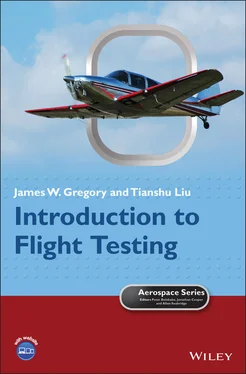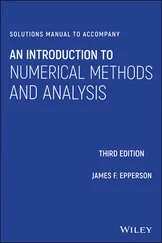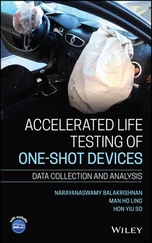Table 2.2 Constants used in Sutherland's Law.
Source: Based on NOAA et al. 1976.
|
SI |
English |
| β |
1.458 × 10 −6kg/(s m K 1/2) |
2.2697 × 10 −8slug/(s ft ° R 1/2) |
| S visc |
110.4 K |
198.72 ° R |
2.2.5 Pressure and Density
To derive an expression for the variation of pressure with altitude, we need to integrate the hydrostatic equation. Since density and gravitational acceleration also vary with altitude, we need to cast the hydrostatic equation in terms of only pressure and altitude, with all other variables being constant. We will work with the hydrostatic equation shown in Eq. (2.5), based on geopotential altitude and constant gravity. Density can be expressed as a function of pressure and temperature via the equation of state for a perfect gas,
(2.14) 
where R = 287.05 J/(kg K) is the gas constant for air. Taking a ratio of Eqs. (2.5)and (2.14), we have
(2.15) 
We will work with Eq. (2.15)for two different cases: first, where the temperature is constant with altitude, and then when temperature varies linearly with altitude.
Equation (2.15)can be directly integrated to find pressure as a function of altitude for the isothermal regions of the atmosphere (11 < h ≤ 20 km and 47 < h ≤ 51 km) since all terms in the equation are constant except pressure and altitude. Performing this integration between the base ( h ref) and an arbitrary altitude within that region ( h ) yields
(2.16) 
where “ref” indicates the base of that particular region of the atmosphere. When the ideal gas law, Eq. (2.14), is applied to isothermal regions of the atmosphere, we see that density is directly proportional to pressure. Thus, we can also write an expression for density in the isothermal regions as
(2.17) 
Equations then form a complete definition of temperature, viscosity, pressure, and density in the isothermal regions of the standard atmosphere.
Portions of the atmosphere with a linear lapse rate, however, require a different approach to integrating Eq. (2.15). In this case, T is no longer constant with respect to altitude, so we must substitute it in the temperature lapse rate. Combining a = dT / dh with Eq. (2.15)yields
(2.18) 
Integration of Eq. (2.18)gives the pressure ratio as a function of the temperature ratio, i.e.,
(2.19) 
where p refand T refare the pressure and temperature at a reference altitude, respectively. Again applying the ideal gas law, Eq. (2.14), the density ratio is given by
(2.20) 
Thus, for regions of the atmosphere with linear temperature lapse rates, Eqs. (2.10), (2.12), (2.19), and (2.20)form a complete description of the temperature, viscosity, pressure, and density variation with altitude. The reference condition for the base of each region is simply the values corresponding to the top of the previous (lower) region.
In the flight testing community and elsewhere, we often express the above ratios as specific variables referenced to sea level conditions. Temperature ratio, pressure ratio, and density ratio are defined as
(2.21) 
In the standard atmosphere, sea level conditions are defined as T SL= 288.15 K, p SL= 101.325 kPa, and ρ SL= 1.225 kg/m 3, where the subscript “SL” denotes sea level. The ratios defined in Eq. (2.21)still satisfy the ideal gas law, giving
(2.22) 
It is important to bear in mind that these equations are a function of geopotential altitude, which presumes constant gravitational acceleration. If properties are desired as a function of geometric altitude, then the corresponding geometric altitudes can be found by solving for h Gin Eq. (2.9).
2.2.6 Operationalizing the Standard Atmosphere
Applying the equations developed above, we can take one of several approaches to implementing the standard atmosphere for flight testing work. Most simply, these equations form the basis for tabulated values of the standard atmosphere, which are tabulated by NOAA et al. (1976) or ICAO (1993). In addition, a limited subset of the U.S. Standard Atmosphere (NOAA et al. 1976) is reproduced in Appendix A. Alternatively, pre‐written standard atmosphere computer codes may be downloaded and used in a straightforward manner. Popular examples include the MATLAB code by Sartorius (2018) or the Fortran code by Carmichael (2018). If these are not suitable for a particular purpose, then custom code can be written, as described below in a form that simplifies the coding.
In the troposphere where the temperature gradient is a = dT / dh = − 6.5 K/km, the temperature distribution in Eq. (2.10)can be expressed as a linear function
(2.23) 
where h is the geopotential altitude and k = 2.256 × 10 −5m −1= 6.876 × 10 −6ft −1is a decaying rate. According to Eqs. (2.19)and (2.20), the pressure ratio and density ratio in the troposphere (0 ≤ h ≤ 11 km) are given by
(2.24) 
and
(2.25) 
where n = − g 0/ aR = 5.2559.

Figure 2.4 The normalized temperature, pressure, and density distributions in the standard atmosphere.
In the lower stratosphere (11 km < h ≤ 20 km), the atmospheric temperature is constant at 216.65 K. If we define the critical altitude at the tropopause to be h trop= 11 km, then the temperature and pressure ratios at the tropopause are θ trop= 0.7518 and δ trop= 0.2233, respectively. Recasting (2.16)in terms of these ratios, we obtain
Читать дальше

























